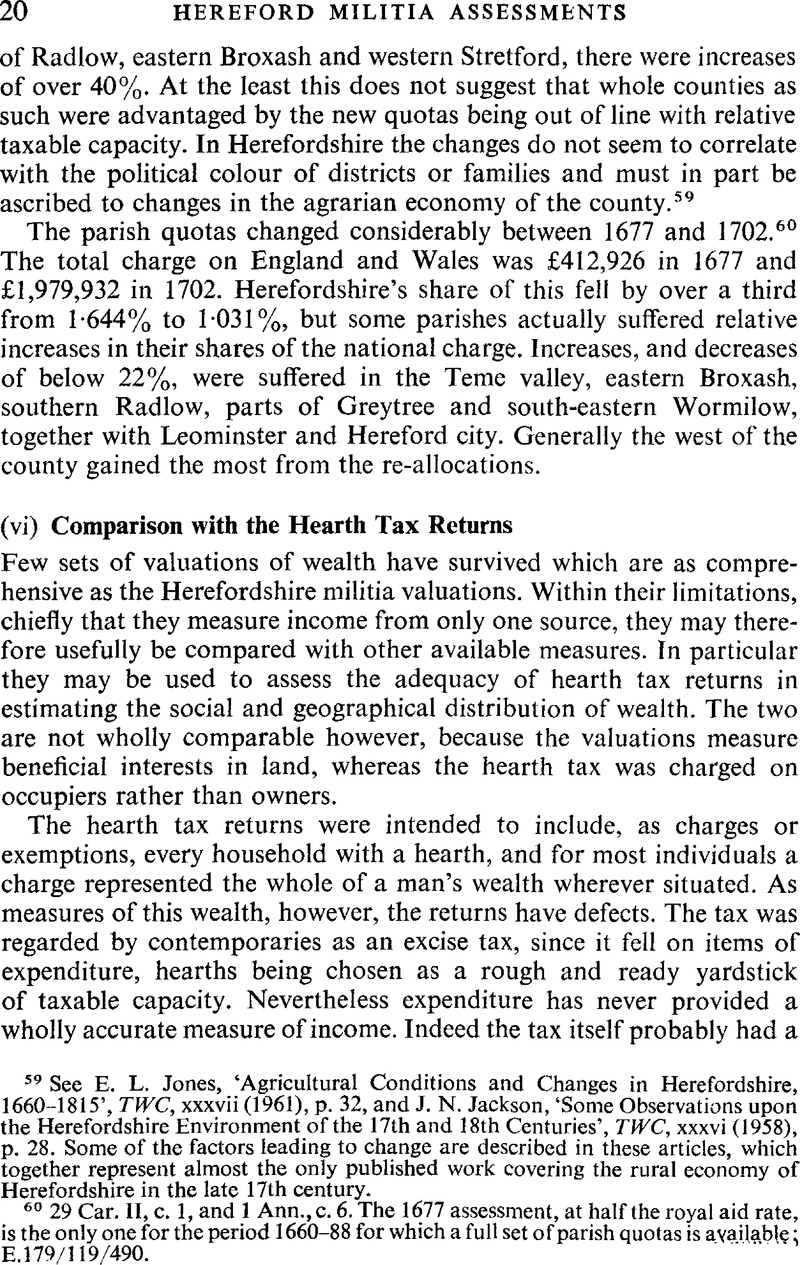No CrossRef data available.
Published online by Cambridge University Press: 21 December 2009

61 See Table 6.
62 In these lists only these boroughs are given separate valuations from those parts of their parishes which constituted the manors foreign (in the strict sense) or other rural manors. Kington, Pembridge and Weobley, perhaps even Kingsland, were boroughs or small urban areas whose valuations are amalgamated here with the more considerable rural parts of their parishes.
63 The product moment coefficient of correlation for each of these hundreds has been calculated thus:

where r = coefficient of correlation, with value from 0 to 1,
and h = the number of charged hearths in each parish in the hundred,
and v = the total valuation of each parish in the hundred,
and n = the number of parishes in the hundred as given in the militia valuations.
r = 1 would show perfect linear correlation and a functional relationship; r =
would show a complete absence of linear correlation; r = a fraction would show a correlation of some predictive value. The fewer the parishes in the hundred the higher would be the value of r necessary to establish a significant correlation, that is, a value which could not be the result of chance.
64 A similar analysis for Hereford City shows: exemptions: 357 (including 12 void); single hearth houses: 73; 2 hearths: 96; 3 hearths: 66; 4 hearths: 50; 5 hearths: 29; 6 hearths: 12; 7 hearths: 11; 8 hearths: 10; 9 hearths: 6; 10 hearths: 3; 11 hearths: 3; 28 hearths: 1; 48 hearths: 1. The 1664 return may understate the number of households in the county by 1,500; the Michaelmas 1671 return records over one tenth more households in each of 32% of the parishes and over one tenth fewer in each of 22%, there being 20,123 charged hearths and c. 13,800 households charged and exempt; E. 179/248/14 (and E. 179/331 for Hereford exemptions).